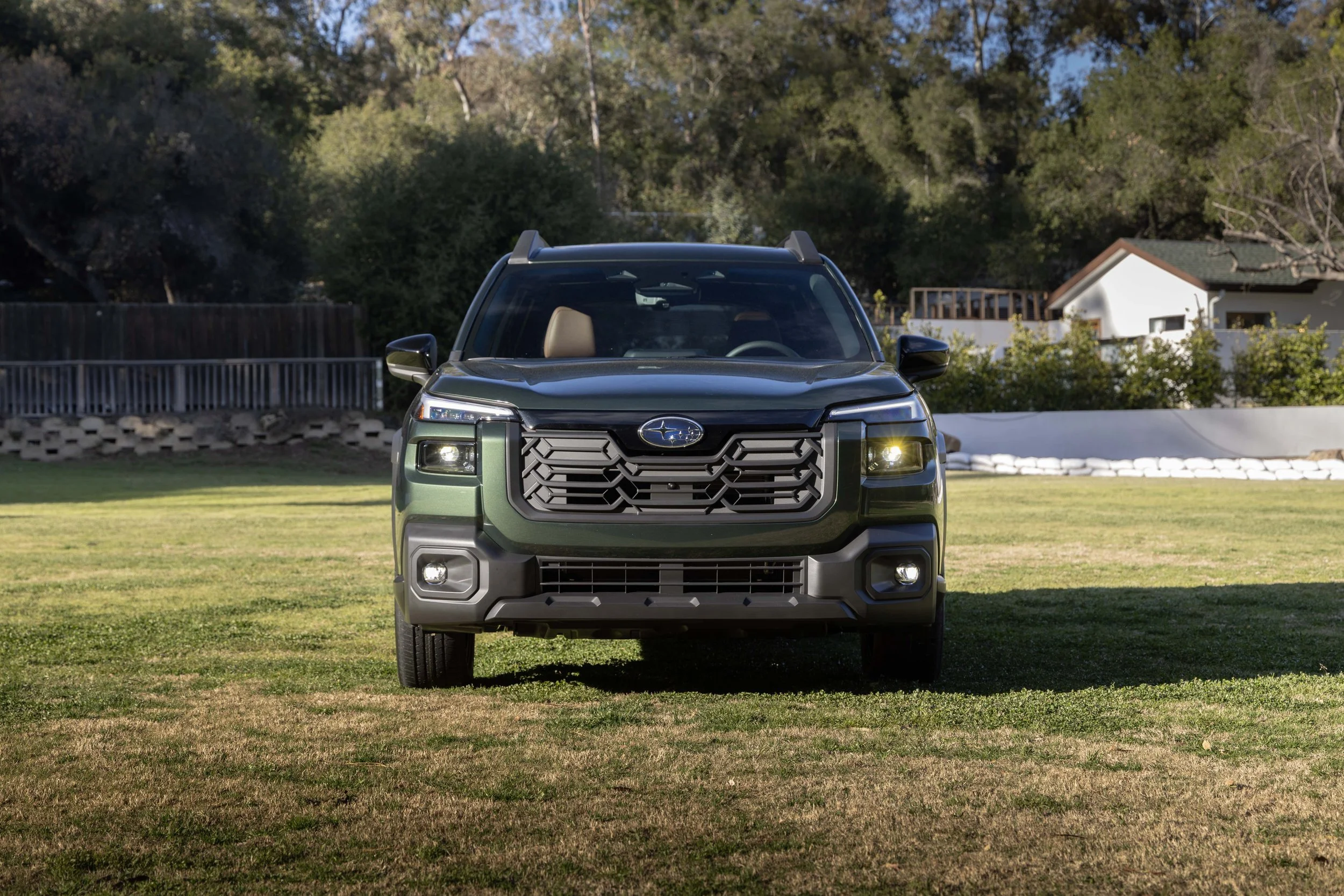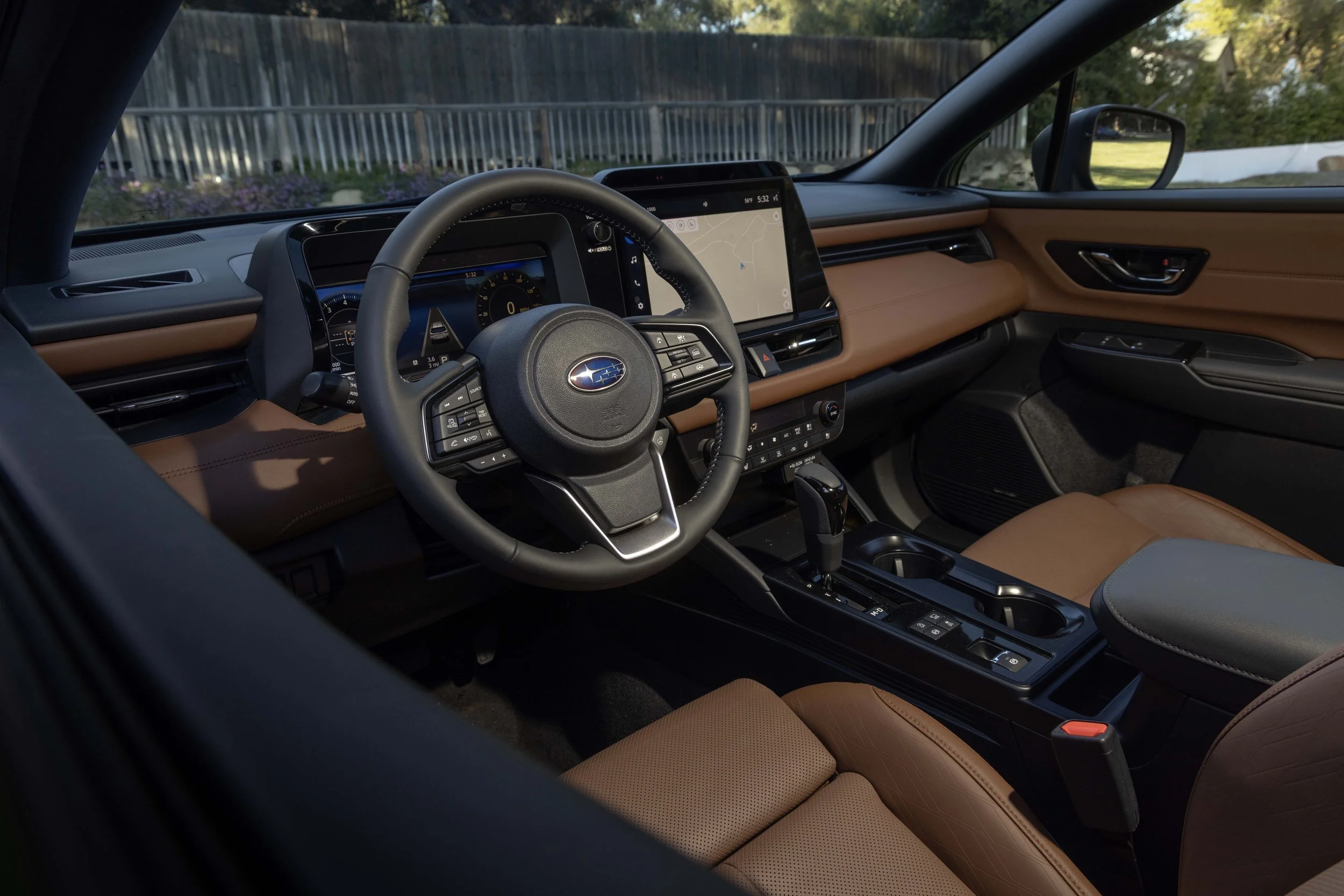LATEST NEWS
Forester versus Outback - who will win?
Richard Bosselman
July 21, 2025
The vastly altered new generation of Kiwis’ top choice Subaru seems set to land in 2026. Meantime, the current car is taking heat from its little brother.
WITH new Forester now installed into sale, Subaru’s New Zealand operation is now assessing prospects for its bigger brother - in current as well as radically reshaped next generation formats.
After six generations of presenting as an elevated, butched-up station wagon, the Outback has taken a whole new trail in its styling, now showing as a blocky sports utility.
That alone will bring the spotlight to a car that historically been the biggest selling among the models fronted by the Auckland-domiciled Inchcape group operator.
But there is ruction in the ranks already, thanks to the new Forester.
Sense the new medium sports utility might assume sales leadership - and perhaps hold it even after the new Outback lands next year - is strong, Inchcape NZ head of distribution Jerry Delaney says.
In part that’s because hybrids are hot sellers and the smaller type has a second-generation drivetrain, using tech from sector giant and Subaru shareholder Toyota, that is expected to win much more appeal than the previous petrol electric in the old Forester.
Also influencing that thought, though, is how a rejigging of Forester price has for the first time made the two model lines direct competitors.
It’s an issue just for the pure petrol Forester, as the hybrids hold a premium.
Even so, at $49,990, the cheapest new Forester, the petrol AWD, exact-matches to the entry Outback while the $54,990 Forester Sport petrol is the same money as an Outback X, alll running a common 2.5-litre, though Forester’s has more torque now.
Only the top line petrol pure Forester Touring is clear of competing, but only just, being only $3k shy of the Outback Touring.
Delaney says as much as the cars tend to attract different customer bases, the clash is not ideal and under review, but also concurs re-establishing separation is a curly one.
“We do have other strategies, pricing for new Forester was set to reflect where the segment sits but the challenge is where the Outback sits.
“Right now we’re doing some market research and seeking consumer feedback. It’s a different customer base but the risk is that we could lose one to the other. That is the workaround.”
Conceivable options? Clearly lowering Forester stickers is off the table. Adjusting Outback upward is also no more realistic, not least when the car is at end of its production life, with no further upgrades planned. Even adjusting the specifications to warrant a price shift might be hard.
For Outback to lose volume leadership would be a blow, but ironically New Zealand is ironically alone is seeing the largest car being a stronger seller. Elsewhere around the world, Delaney says, Forester tends to hold ascendance.
“We buck the trend in that sense … we expect good things from new Forester. It’s an exceptional car.
“Does Forester being so good change the consumer mindset between it and the Outback? Potentially, it could.”
If Kiwis want to get a handle on what new Outback proposes, it’s an easy find.
The car is already settled into sale in North America, which has long been such a priority market that it sees Subaru product up to a year ahead of any other global destination.
Delaney says it’s too soon to discuss when Outback will be here and in what specifications (Subaru Australia people at the NZ Forester event also said the same).
But he doesn’t dispute conjecture that it’s clearly a 2026 car. And he also says the current car will remain in circulation right up until the new one comes.
“We have made sure we have a good pipeline in respect to that runout.”
Outback’s main supporters have always been private buyers, and it achieve highest penetration in Otago where it is favoured as a snow field and off-road explorer.
Subaru NZ currently holds two percent of new vehicle volume and no Subarus have been on the top 15 favourite cars list for the past 18 months.
Delaney is keen to see the make gain volume. “With what we have coming in, with our growth plan and our cycle plan we are pretty confident. New models with new technology are coming through.”
He enforces that current Outback having latterly found traction as a rental car, is not a portent of how the distributor wants to realise its ambition for more sales. That’s a limited supply opportunity.
“We have to look at different sales channels with our growth mentality, and we are looking at any opportunity, but at the end of the day we are very aware of how much we put into the rental space, as that is not our traditional playground.”
One question left hanging is whether Outback is expected to also ultimately go hybrid.
Conceivably the Forester’s 145kW/212Nm ‘strong hybrid’ might be an easy fit in respect to engineering, but that drivetrain isn’t an option in the United States and Canada.
There the new car provisions with the 2.5-litre, making close to the 136kW and 247Nm that new Forester provisions, and the turbo four, which creates 194kW/376Nm Stateside, and 183kW/350Nm in current NZ specification.
Subaru says it’s gone with the boxy look for Outback in order to emphasise the type’s “height and durability.” It ties coherently to the new Forester.
Practicality has favoured the new design. Subaru points out the new Outback’s roof rails are built to handle a 100 kilogram dynamic load - that’s enough for bikes, gear, or even a rooftop tent. A more upright rear hatch helps improve both aesthetics and cargo capacity.
Go to the Wilderness - and that’s not been an option for Kiwis, though at least one enterprising local fan has imported and fitted all the kit to transform his current generation car (seen it, looks great) - and Subaru fits heftier looking bumpers, a black grille with 'SUBARU' script, extra body cladding, copper-coloured highlights, hexagonal LED fog lights, and 17-inch wheels with all-terrain tyres.
Wilderness isn’t just for visual impact, btw. As with the current edition, there are useful gains - 20mm more ground clearance (241mm vs 221mm), and better off-road angles than the regular Outback delivers.
These remain matched to a continuously-variable automatic transmission and the same all-wheel drive.
In addition to the familiar driver aides for on road and off we get now, it adds Emergency Stop Assist technology – capable of bringing the car to a halt on the side of the road if the driver is detected to be incapacitated – and, in US market form but perhaps not for global issue, a semi-autonomous feature for highway driving, at speeds up to 137kmh.
The cabin is still set up for five occupants and delivers a fresh dashboard. The The 11.6-inch portrait touchscreen is gone, and two new displays are fitted – a 12.1-inch infotainment touchscreen and a 12.3-inch digital instrument cluster. Though this is the car’s first step into the digital work, it has more physical buttons than the present type.
Sense the roof height has increased is no illusion; the type gains 51mm for more interior space. This also impacts on the boot space, which has grown by a claimed 57 litres to 980 litres. That’s likely measured to the roof.




